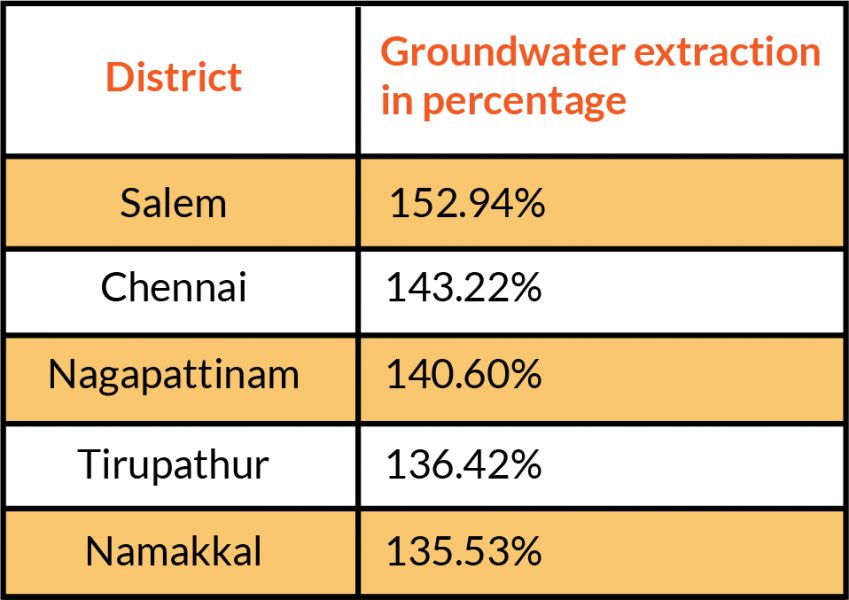
Several TN districts drawing groundwater above permissible limits

Several districts in Tamil Nadu are drawing more groundwater than what is allowed, according to the data released by Union Minister of State for Jal Shakti Bishwewar Tudu in Rajya Sabha.
The dynamic ground water resources of the country are being periodically assessed jointly by the Central Ground Water Board (CGWB) and state governments.
“As per the 2020 assessment in Tamil Nadu, the Total Annual Ground Water Recharge is around 20 billion cubic meter (BCM) and the Annual Extractable Ground Water Resource is around 18 BCM. The Annual Ground Water Extraction for all uses is around 15 BCM. The stage of ground water extraction, which is a measure of Annual Ground Water Extraction for all uses (irrigation, industrial and domestic uses) over Annual Extractable Ground Water Resource is around 83 percent,” said the minister in reply to a question from Mohamed Abdullah.
Salem withdraws the maximum amount of ground water among all districts in the state. It has drawn a total of 70723.54 BCM, and in terms of percentage the district has extracted 152.94 percent of groundwater. Salem is followed by Chennai with 143.22 percent extraction.
Salem draws groundwater mostly for irrigation and out of the 70,723.54BCM it extracts, 65802.06BCM is used for irrigation and only 4921.59BCM is used for industrial and domestic purposes. In contrast, in Chennai, out of the total of 6756.72BCM ground water, 6515.70BCM is used for industrial and domestic purposes, and only 241.05BCM is used for irrigation.

Among districts which draw the least amount of groundwater is Ramanathapuram, which draws only 10.51BCM of the annual extractable groundwater and experts say this is due to the presence of small desalination plants which use seawater for drinking and other purposes. Nilgiris follows Ramanathapuram, with only 18.58BCM of groundwater being extracted by the district.
CGWB generates ground water quality data of the country on a regional scale as part of its ground water quality monitoring program and various scientific studies. These studies indicate the occurrence of contaminants such as Fluoride, Arsenic, Nitrate, Iron and heavy metals beyond permissible limits for human consumption, in isolated pockets in parts of Tamil Nadu as well.
Also read: Desiltation of reservoirs: TN fails to learn from floods, water crisis
There are 27 districts in which the groundwater has salinity, 25 districts where the groundwater has fluoride, 26 where it has nitrate and nine districts have arsenic in the groundwater.
Heavy metals like lead, cadmium, chromium, are present in groundwater. Lead is found in groundwater found in Dindigul, Tiruvallur and Kancheepuram. Similarly, Cadmium is found in Tiruvallur groundwater, and Chromium in groundwater found in Cuddalore, Dindigul, Erode, Kancheepuram and Tiruvallur districts.


